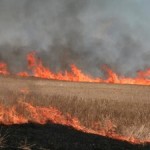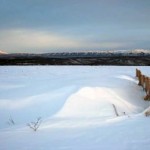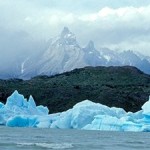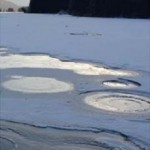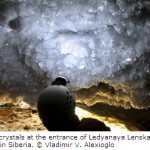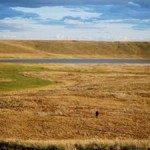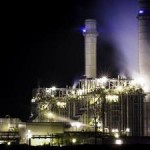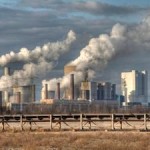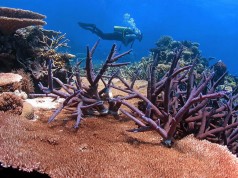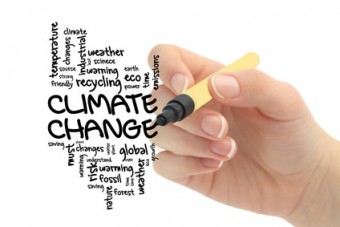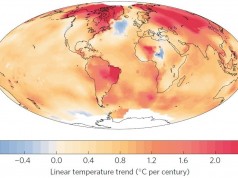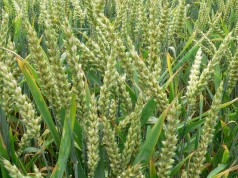
Doha – Permafrost covering almost a quarter of the northern hemisphere contains 1,700 gigatonnes of carbon, twice that currently in the atmosphere, and could significantly amplify global warming should thawing accelerate as expected, according to a new report released on November 27 by the United Nations Environment Programme (UNEP).
Warming permafrost can also radically change ecosystems and cause costly infrastructural damage due to increasingly unstable ground, the report says.
“Policy Implications of Warming Permafrost” seeks to highlight the potential hazards of carbon dioxide and methane emissions from warming permafrost, which have not thus far been included in climate-prediction modelling. The science on the potential impacts of warming permafrost has only begun to enter the mainstream in the last few years, and as a truly “emerging issue” could not have been included in climate change modelling to date.
The report recommends a special IPCC assessment on permafrost and the creation of national monitoring networks and adaptation plans as key steps to deal with potential impacts of this significant source of emissions, which may become a major factor in global warming.
“Permafrost is one of the keys to the planet’s future because it contains large stores of frozen organic matter that, if thawed and released into the atmosphere, would amplify current global warming and propel us to a warmer world,” said UN Under-Secretary General and UNEP Executive Director Achim Steiner.
“Its potential impact on the climate, ecosystems and infrastructure has been neglected for too long,” he added. “This report seeks to communicate to climate-treaty negotiators, policy makers and the general public the implications of continuing to ignore the challenges of warming permafrost.”
Most of the current permafrost formed during or since the last ice age and extends to depths of more than 700 meters in parts of northern Siberia and Canada. Permafrost consists of an active layer of up to two metres in thickness, which thaws each summer and refreezes each winter, and the permanently frozen soil beneath.
Should the active layer increase in thickness due to warming, huge quantities of organic matter stored in the frozen soil would begin to thaw and decay, releasing large amounts of CO2 and methane into the atmosphere.
Once this process begins, it will operate in a feedback loop known as the permafrost carbon feedback, which has the effect of increasing surface temperatures and thus accelerating the further warming of permafrost – a process that would be irreversible on human timescales.
Arctic and alpine air temperatures are expected to increase at roughly twice the global rate, and climate projections indicate substantial loss of permafrost by 2100. A global temperature increase of 3°C means a 6°C increase in the Arctic, resulting in an irreversible loss of anywhere between 30 to 85 per cent of near-surface permafrost.
Warming permafrost could emit 43 to 135 gigatonnes of carbon dioxide equivalent by 2100 and 246 to 415 gigatonnes by 2200. Emissions could start within the next few decades and continue for several centuries.
Permafrost emissions could ultimately account for up to 39 per cent of total emissions, and the report’s lead author warned that this must be factored in to the treaty to address global climate change expected to replace the Kyoto Protocol.
“The release of carbon dioxide and methane from warming permafrost is irreversible: once the organic matter thaws and decays away, there is no way to put it back into the permafrost,” said lead author Kevin Schaefer, from the University of Colorado‘s National Snow and Ice Data Center (NSIDC). “Anthropogenic emissions’ targets in the climate change treaty need to account for these emissions or we risk overshooting the 2°C maximum warming target,” he added.
Most of the recent climate projections are biased on the low side relative to global temperature because the models do not at this time include the permafrost carbon feedback, the report says. Consequently, targets for anthropogenic greenhouse gas emissions based on these climate projections would be biased high.
Ecosystems and Infrastructure Under Threat
Warming permafrost also brings negative consequences in terms of ecosystem and infrastructure damage.
The dominant ecosystems in permafrost regions are boreal forests to the south and tundra to the north. Permafrost is impermeable to water, so rain and melt water pool on the surface – forming innumerable lakes and wetlands which are used by migratory birds as summer breeding grounds.
Ecosystem disturbances due to permafrost degradation will change species composition, and with it animal habitat and migration, according to the report.

Longer growing seasons due to higher temperatures favour the growth of shrubs and woody vegetation resulting in a northward migration of the tree line. Permafrost degradation and the resultant drying of the land can also result in disturbances such as fires. Fire in boreal forests has recently increased in intensity and frequency, and could become more common in tundra regions.
However, thawing permafrost is structurally weak, resulting in foundational settling that can damage or even destroy buildings, roads, pipelines, railways and power lines. Infrastructure failure can have dramatic environmental consequences, as seen in the 1994 breakdown of the pipeline to the Vozei oilfield in Northern Russia, which resulted in a spill of 160,000 tonnes of oil, the world’s largest terrestrial oil spill.
Roads, buildings and other infrastructure in discontinuous permafrost, which tends to be warmer, and along the Arctic coast, where salt content means small temperature changes can turn ice to ground water, are most vulnerable to damage.

